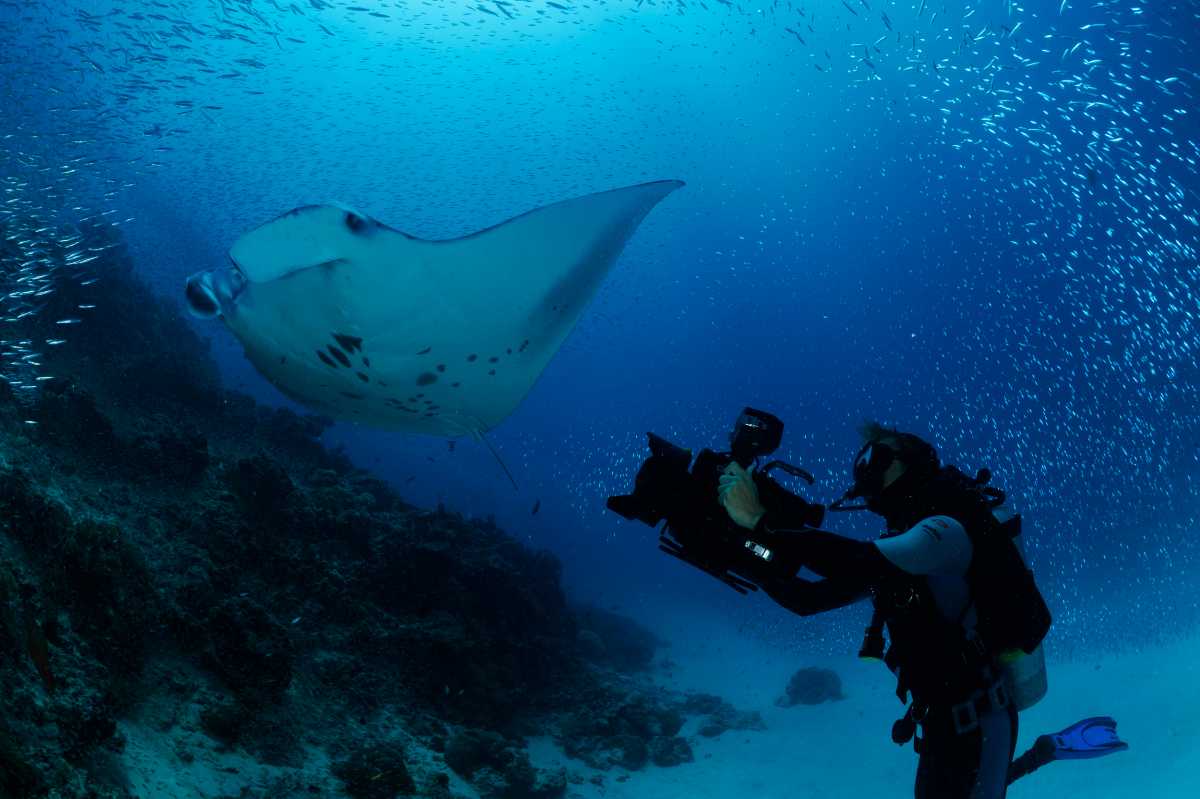Hanifaru Bay
Top Hotel Collections
Hanifaru Bay, Maldives Overview
Located in a vast UNESCO Biosphere Reserve called Baa Atoll, an administrative division within one of the world's most geographically dispersed countries, Hanifaru Bay is paradise, to say the least. Hanifaru Bay is known to etch an unforgettable memory in the minds of its visitors, providing one of Maldives' best known underwater adventures such as scuba diving and snorkelling.
Untouched white sand beaches, a breathtaking abundance of marine life, pristine blue lagoons, and of course who can ignore the artful blend of the navy blue ocean waters with turquoise fringed bays of the shallow reefs. If there is a place known to provide unparalleled aesthetically pleasing views, Hanifaru Bay is it.
Read More on Hanifaru Bay
The Hanifaru Charm - Manta Rays and Whale Sharks

Locally known as 'Vandumaafaru Adi', Hanifaru Bay is designated as a marine protected area thanks to its reputation as playing grounds for manta rays and whale sharks that congregate here during peak seasons of the south-west monsoons, usually between June to November. Although, it is also well known to start as early as May and as late as December.
Spreading over an area of just over a football field, the keyhole-shaped bay holds captive millions of microscopic plankton that get accumulated here due to strong winds and water currents. These tend to float very close to the surface and hence act as perfect meals for two majestic ocean giants, sharks and rays.
It is particularly known to be the largest feeding station for the Manta Rays in the world and the feeding frenzies during peak seasons are quite the spectacle. On the other hand, the area is also one of the few places in the world where whale sharks gather to mate. According to sources, witnessing up to 200 manta rays accompanied by whale sharks is not a rare experience here.
Snorkelling in Hanifaru Bay
_20181017131904.JPG)
Although diving has been banned and no longer permitted in the bay waters, you can snorkel up close with the manta rays and whale sharks. This obviously does not come without rules and regulations as snorkelers are requested to maintain a minimum distance from these gentle leviathans. A distance of 3-meter radius from the head of the whale shark and 4 meters from its tail should be maintained compulsorily. Also, it is important to remember that touching or stroking the animals is strictly forbidden, as is approaching the animals from ahead or crossing paths with them.
Due to disturbances by human intervention, the population of manta rays and whale sharks visiting the bay areas dropped drastically in the early 2000s. This has since called for the implementation of eco-friendly guidelines to be followed. To visit Hanifaru Bay, it is necessary to purchase visitor tickets from the Hanifaru Visitor Center on Dharavandhoo island. You can also buy tickets from officially designated resorts and liveaboards which are approved by the Baa Atoll Conservation Fund (BACF). A boat taxi then transfers the visitors to Hanifaru. This ticket allows you to enjoy the company of these marine animals for 45 minutes, under the guidance of a certified snorkelling guide. The Environmental Protection Agency takes up the responsibility to safeguard the bay from human interventions or any other setbacks.
The cost for snorkelling at Hanifaru Bay is approx $20 including equipment. There is an additional entry fee of $30
to Hanifaru Marine Protected Area.
Activities in Hanifaru Bay - Experience a World Like Never Before
2. Snorkelling: It is said that witnessing the manta rays' feeding frenzy while snorkelling in the bay waters are a sight to behold. The animal's wingspans extend anywhere between 4 to 8 meters. Now imagine hundreds of these giants occupying an area no more than a football field! A whirling extravaganza unfolds in the cyan tinged waters that follow a patterned behaviour as they funnel across the surface and into the depths of the seas. Hanifaru Bay truly comes to life when it is encountered from the depths below.
Apart from manta rays and whale sharks, there is rich biodiversity of other marine life such as eagle ray, stingray, moray eel, hammerhead sharks, dolphins, sea turtles and many more. Snorkelling excursions here are unique, superlative experiences that tend to imprint an everlasting memory.
3. Night Snorkelling: Some service providers also offer night snorkelling expeditions, when it is best to engage in a vista of bioluminescent plankton and other nocturnal creatures that are usually aloof during the day. The waters of the Indian Ocean are a treasure trove for marine enthusiasts, and the untouched environs of the pristine islands add to the charm of a flawless vacation.
How To Reach Hanifaru Bay
You can also treat yourself to an extraordinary experience by travelling in a seaplane to your destination, although this requires prior planning and confirmation. Sea transport such as ferries and speedboats to nearby destinations also ply on a frequent basis but are subject to weather conditions.
